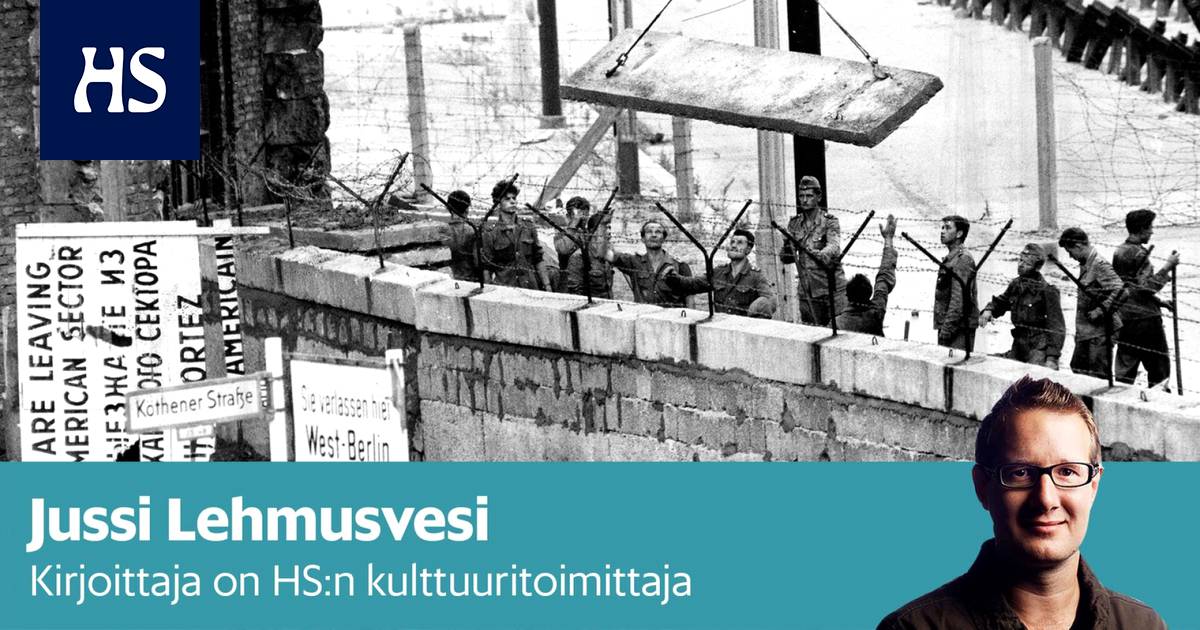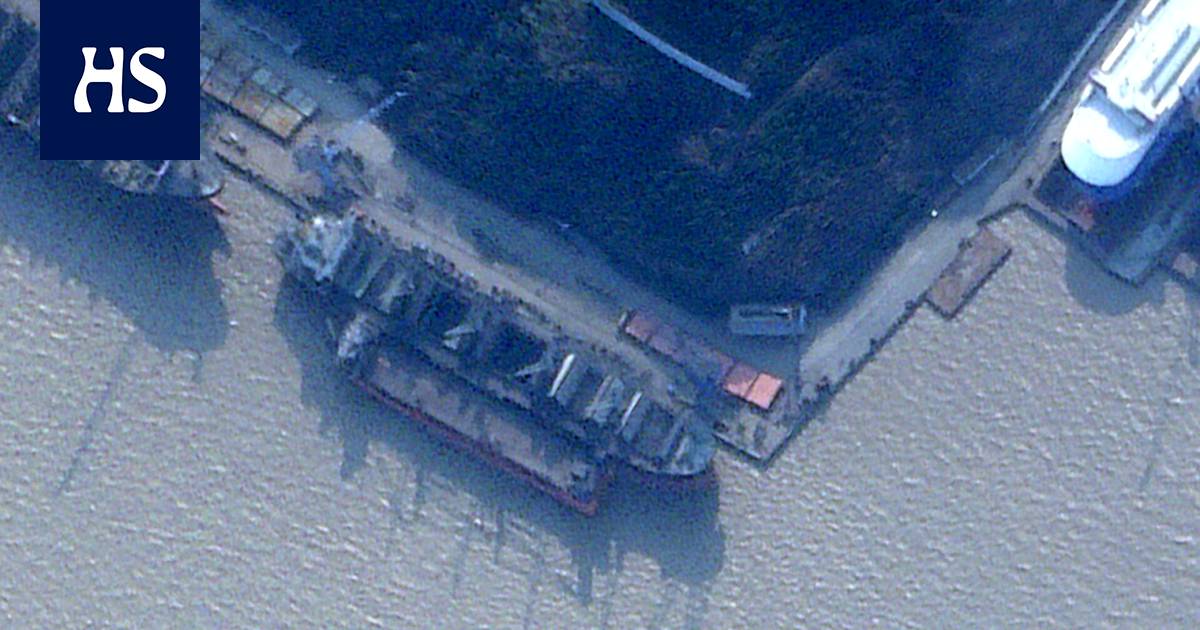In the summer of 1962, a group of German men began to dig a tunnel under the Berlin Wall, which was meant to save East Germans to the West. TV producer Reuven Frank, on the other hand, decided to film the escape in real time.
A year 1962 October American TV producer Reuven Frank watched the demanding herd of dozens of journalists and photographers in front of him.
A few days ago, some journalists had found a film tape used by NBC in a Berlin basement, and after that Time magazine had revealed that NBC had financed the tunnel in exchange for filming rights to a documentary produced by Frank.
This was largely true. Frank had paid $12,000 to the students who had started digging a tunnel under the wall. The amount was used to buy five tons of steel for the tunnel’s rails, a van, electrical wiring and light bulbs, and pumps to remove the water.
“We weren’t out recruiting tunnel diggers, the tunnel would have been built without it,” Frank tried to defend himself at the press conference.
On the opposite side were the competing media, the US State Department and the president, who were both enraged John. F. Kennedy too. It seemed likely that the documentary would never be seen.
Reuven Frank’s story is told as one side plot in the book Escape Under Berlin (2022)the Finnish translation of which appeared at the beginning of the year, published by WSOY.
The tunnel documentary Frank ended up as a producer partly by chance. He had arrived in Berlin more than a year earlier, the day before tens of thousands of East German National People’s Army soldiers and police blocked the roads and streets leading to West Berlin.
The Berlin Wall had begun to form.
Frank got the idea from the new barbed wire fence. What if NBC aired the story of people fleeing from the East to the West? But not the escape that had already happened, but that was yet to come. They would describe without knowing how the escape would eventually turn out.
“Every piece of news should contain elements of fiction and drama without sacrificing good manners or responsibility. It should have structure and conflict, problem and resolution, rising and falling action, beginning, middle and end,” Frank explained to his colleagues, reciting a principle that most documentarians still follow.
The only problem was that the film crew didn’t have a tunnel to film.
Eventually one was found after months of desperate searching, and filming began. The tunnel was so narrow that there was only room for the smallest camera, which could hold two and a half minutes of film.
Then the film had to be changed.
The tunnel ran so close to the ground that Frank’s washed cameraman could hear the world above in addition to the diggers’ grunts and groans. Trams rattle. The clatter of a woman’s stiletto heels.
Shortly after filming began, the US Secretary of State Dean Rusk arrived in West Berlin.
“The wall has to go,” Rusk declared, not knowing that at the same time, a tunnel to escape was being built quite precisely under his feet.
Four during the month’s excavation work, the cameramen hired by Frank shot more than three kilometers of film.
Frank’s problem was State Department officials and the White House. Berlin was President Kennedy’s obsession, as he considered it the most likely place to start a nuclear war.
Hearing rumors about the filming, the Kennedy administration wanted to prevent TV crews from interfering with the escape operations, and relayed the message to Frank’s superior at NBC. However, this supported the producer, and it was decided to finish the project secretly at any cost.
A good plan, which was destroyed by one film pack forgotten in the corner of the basement.
In September 1962 Reuven Frank then sat in the Berlin office and waited for information about the success or failure of the escape. After agonizing hours, the cameramen arrived, and the look on their faces said it all.
The daring escape through the 120-meter-long tunnel was successful, and 29 East Germans made it to safety.
The next day, water filled the tunnel.
This mother and daughter escaped through the tunnel in 1962. Screenshot from the movie The Tunnel.
NBC’s after a nightmarish press conference, things got completely out of Frank’s hands. The East German government characterized the film as an “attack” and demanded that the United States punish the NBC journalists. State-run news in Moscow reported that NBC had hired the diggers, and that the escapees were portrayed by actors.
Even the West Berlin Senate felt that the film should not be shown.
Soon the US State Department held a press conference. According to it, the film is not “in the national interest”, but “risky, irresponsible, undesirable and contrary to the interests of the United States”.
Less than a week later, the world drifted to the brink of nuclear war, and the Cuban crisis began.
NBC informed Frank that the film would never be televised. Frank, on the other hand, announced that he was leaving the company.
Then, for one reason or another, the minds of the TV executives changed.
It was in the early evening on Monday, December 10, 1962. Shortly before 9:30, viewers switched to NBC to see the sensational documentary: The Tunnel.
For the next hour and eighteen minutes, 18 million American homes watched as diggers, hiding from guards, crushed concrete in a factory, lay on their backs in a tunnel, and dug a hole while covered.
Tired faces, sweat stained faces, blisters and tears.
Then we saw the escape. People moving along the tunnel. Mother washing her high heels before coming to earth. A toddler looking at his godfather’s camera.
Then the image moved to the ground and a hand came out of the tunnel. A human head appeared. Then more arrivals appeared from the tunnel. Men, women, children and the elderly. As the American TV audience watched, one fugitive after another fled to West Berlin.
Next on the day the reviews appeared. The LA Times called the film “the most profound and inspiring human documentary” in TV history. The Boston Globe agreed. One journalist suggested that the film should be televised in all free countries.
That’s what happened. The United States Information Agency under the Kennedy administration bought one hundred copies of the film. Then it was performed all over the world as an indication of man’s longing for freedom.
Half a year after the film was shown, Kennedy himself gave his famous speech in Berlin.
“All free people, wherever they live, are residents of Berlin, and therefore I, as a free man, proudly say the words: Ich bin ein Berliner.”
I’m from Berlin.
Five months later, Kennedy was assassinated in Dallas.
President John F. Kennedy gave his famous speech in Berlin in 1963 to a huge crowd.
The Tunnel received three awards at the 1963 Emmy Awards, including the most coveted Program of the Year award, which had never before been given to a news organization. And it hasn’t been given since then either.
Reuven Frank spoke to 50 million TV viewers at the award ceremony. He defended free communication and dedicated the film to the tunnel diggers. Frank later became CEO of NBC. He died at the age of 85 in 2006.
In the obituary of The New York Times, he was characterized as “the father of television journalism”.
The Tunnel (1962) can be seen on Youtube.
#Saturday #Essay #Russia #Germany #United #States #block #project #told #undermining #Berlin #Wall #documentary #symbol #mans #longing #freedom









